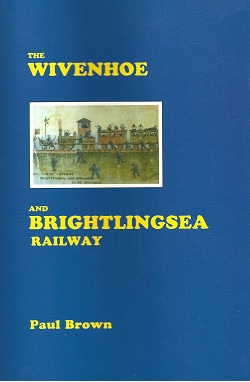The Wivenhoe and Brightlingsea Railway
By Paul Brown, Ian Henry Publications, 1985, 1995, ISBN 0 86025 456 9, 155pp (Essex County Libraries E.385)
Summary by Pat Marsden
A history of the east coast line from its opening in 1866 to its closure in 1964. Between these dates are recorded the rivalry between the Wivenhoe and Brightlingsea Railway and the neighbouring Tendred Hundred Railway and the eventual absorption of both by the Great Eastern (including the ploys that the large company used before swallowing its smaller competitors). Significant events included the burning down of Brightlingsea Station in 1900 and the Great Flood of 1953, which engulfed the Line and its embankments. Outside events also had their impact on the Line, like the failure of the Oyster Harvest, two World Wars, and economic depression. In these pages can be found railwaymen, accident victims, eccentrics, campaigners and opportunists. A social chronicle of this corner of Essex, as well as a history of a branch line.
The book contains excellent details, anecdotes, plans, maps and photographs. It refers to steam yachts, local industries (sprats destined for manure taken by rail to Wivenhoe, etc.) and local families such as the Corsellis’s and the Sainty’s. It describes the change from steam to diesel; holiday travel; and picnics at White House Beach. Wivenhoe Station, itself, was built in 1886 in close proximity to John Harvey’s shipyard where fast schooners were built. The book also refers to the Swing Bridge over Alresford Creek; the Station Hotel; and the role of horses. The carters horses which were used for hauling light parcel wagons, goods vans or as shunters were kept in stables and when the Great Eastern began to classify its locomotives, the horses were affectionately referred to as ‘Class G G’.







No Comments
Add a comment about this page